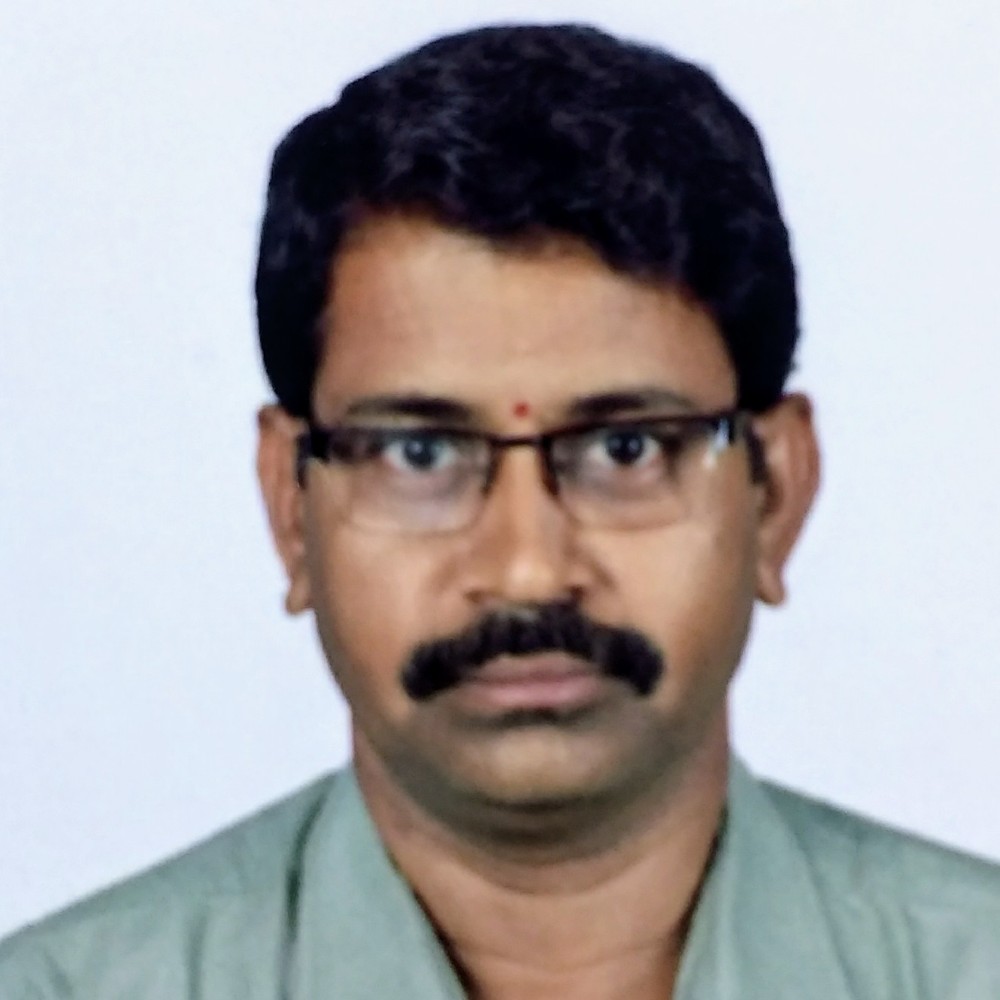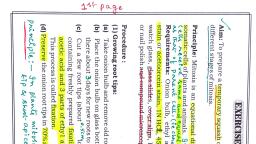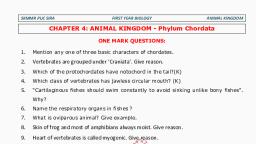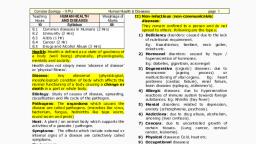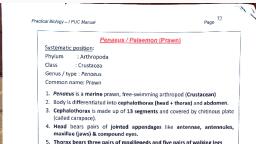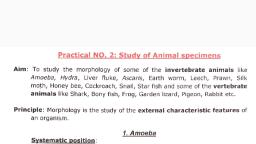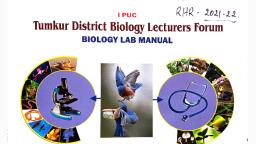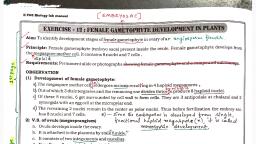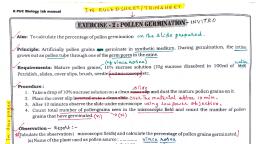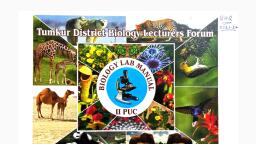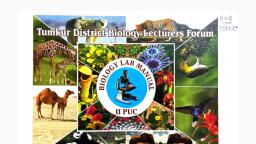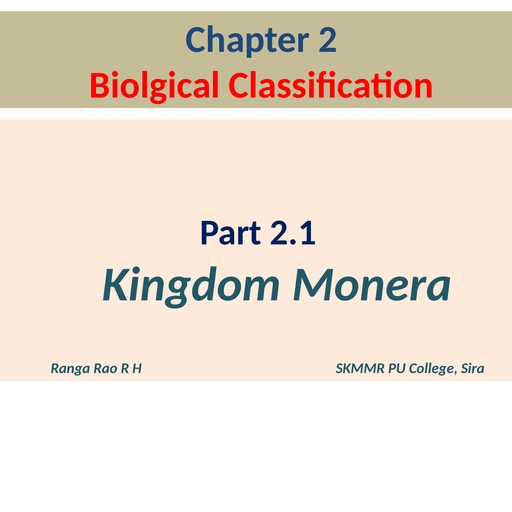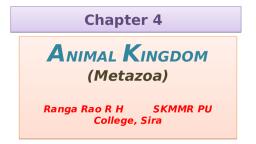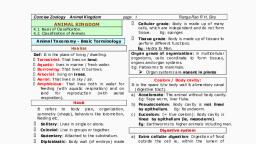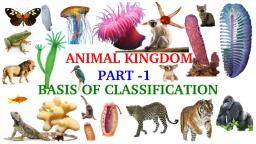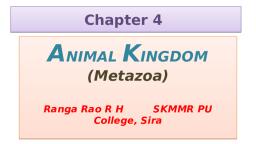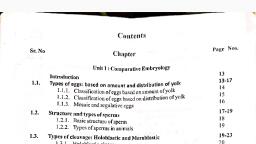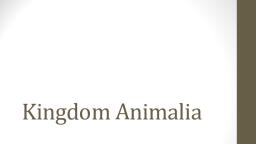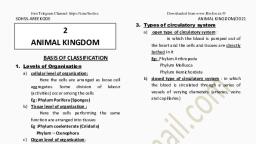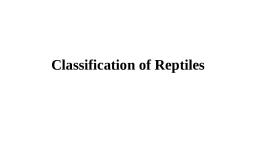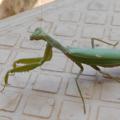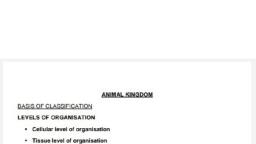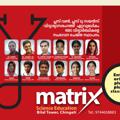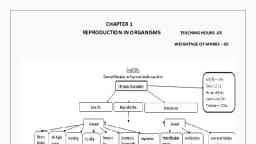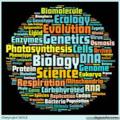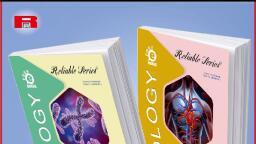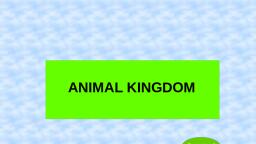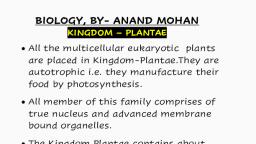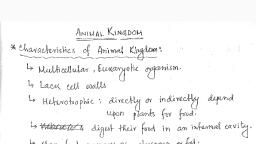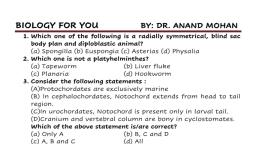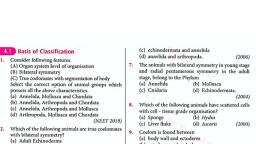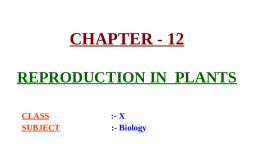Page 2 :
Why Animal classification ?, When you observe the animals around us, you find diversity in their structures and forms. , Till now over a million species of animals have been described, so that the need for classification becomes all the more important. , The classification also helps us in assigning a systematic position to newly described species.
Page 3 :
Habit, Def: It refers to body plan, levels of organization, symmetry (shape of the body), behaviors like locomotion, feeding etc., Solitary: Lives in single or alone. Eg: Spider, Colonial: Live in groups or together. , Eg: Ants, Honey bees, monkeys, Sedentary forms: Attached to the substratum., Eg: Sponges, Hydra, Sea lilly, Nocturnal: The animals that are more active during nights. Eg: Cockroach, owl, bat, some parasitic insects., Diurnal: The animals that are more active during day time.
Page 4 :
4.1. BASIS OF Animal classification, Following features are considered as basis of classsification., Levels of organisation: Number and arrangement of cells, Symmetry (Body shape) and segmentation of body, Germ layers of body wall of embryo, Nature of Coelom (body cavity), Patterns of digestive systems, circulatory systems, reproductive systems etc., Notochord etc.,
Page 5 :
4.1.1: Levels of Organisation, Acellular / unicellular: Body is made up of single cell. Eg: Protozoans (Amoeba), yeast fungi, bacteria, algae like diatoms and Chlamydomonas., Cellular grade: Body is made up of many cells, arranged as loose cell aggregates (which are independent and do not form tissue). Some division of labour (activities) occur among the cells Eg: Sponges, Tissue grade: Body is made up of different tissues to perform different functions. The group of cells performing the same function and with common origin is known as tissue. Eg: Hydra (Coelenterates).
Page 6 :
Organ grade of organization: in multicellular animals, different tissues coordinate to form organs, each specialised for a particular function. Eg: Flatworms (Platyhelminthes)., Organ system level of organisation: Different organs are associated to form functional systems, each system concerned with a specific physiological function. Eg: Annelids, Arthropods, Molluscs, Echinoderms and Chordates., Organ systems are absent in plants., 4.1.1. Levels of Organisation
Page 7 :
4.1.2: Symmetry (body shape / Physic), Bilateral symmetry: When an animal is cut into two identical / equal halves (right and left), only in one longitudinal plane, passing through the central axis. , Eg: Tape worm. Round worm, Annelids (earthworm), Arthropods (cockroach, Crab), Frog, man, etc.,, Radial symmetry: When an animal is cut into two equal halves in any longitudinal plane, passing through the central axis. Eg: Coelenterates (Hydra, jelly fish), Ctenophores (Pleurobrachia), Echinoderms (star fish)., Asymmetry: Without definite shape. i.e., any plane that passes through the centre does not divide them into equal halves. Eg: Amoeba, Sponges.
Page 11 :
Cavity of embryo, Cavity of embryo
Page 14 :
4.1.5: Metamerism / Metamerical segmentation, Def: It is the division of body into segments both externally and internally with a serial repetition of some internal and external body parts., Eg: Annelids (earthworm), Arthropods (cockroach), Note: , Division of body into segments called ‘metameres’ by grooves called annuli; , Each segment has its own organ systems. , Thus segments are similar both externally & internally), Body cavity is also divided by septa (cross wall).
Page 16 :
4.1.6: Notochord, Notochord is a rod-like hard structure formed on the dorsal side during embryonic development in higher animals. In some, it is differentiated into vertebral column or back bone and is present throughout the life. , Notochord is derived from the germ layer mesoderm. , Animals with notochord are called chordates (eg: From protochordates to mammals) and those animals which do not form this structure are called non-chordates (= Invertebrates) , E.g., poriferans to echinoderms.
Page 17 :
Complexities in Organ systems, Incomplete digestive system: Anus absent. For example, the digestive system in Coelenterates (hydra) Platyhelminthes (flat worm) has only a single opening to the outside of the body that serves as both mouth and anus. , Complete digestive system has anus apart from mouth. Eg: Round worm upto man, Extra cellular digestion: Digestion of food takes place outside the cell. i.e, within the lumen of digestive tract. Eg: Hydra, higher animals like man., Intra cellular digestion: Digestion of food within the cell. Eg: Phagocytes, Amoeba, Hydra etc., Digestive system
Page 18 :
Complexities in Organ systems, Blastopore: It is the opening of the blastocoel cavity in embryo stage. Blastopore may develops into mouth (group Protostomia), or it may develops into anus (group Dueterostomia, eg: man, frog)., Parasite: The animals which depends on the host body for food, shelter, reproduction etc., Endoparasite: It lives inside the host body and depends completely on it. Eg: Tapeworm in man / pig, round worm in man, malarian parasite, virus, bacteria. , Ectoparasite: It depends on host without entering into the host body. Eg: Mosquito, leech, head lice, bedbug, tics, mites etc,., Digestive system
Page 19 :
Skin parasites, Tick, Mite
Page 23 :
Complexities in Organ systems, Open type: Blood capillaries absent. Blood is pumped out of the heart, moves through tissue spaces and coelomic spaces called sinuses / sinusoids. Here the cells and tissues are directly bathed in the blood., Eg: Arthropods (cockroach), Molluscans (snail), Liver of man., Closed type: Blood passes through definite capillaries and here the tissues are not in direct contact with the blood. Eg: Annelids (earthworm) & all vertebrates., Haemocoel: The coelomic spaces filled with blood in open type of circulatory system. , Eg. Cockroach (insects), molluscans, Circulatory system
Page 24 :
Types of blood circulation, Single Circulation: Heart receives only impure blood from tissues by one complete circulation. From the heart, it is supplied to the gills for purification. Then the purified blood is directly supplied to the tissues, here heart is two chambered. Eg: Fishes, Double Circulation: The Heart receives both pure and impure bloods by two different circulations say pulmonary circulation and systemic circulation. Here the heart is 3 / 4 chambered., Eg: Frog, reptiles, birds, mammals including man.
Page 27 :
Myogenic Heart: Heart beat is originated by a group of specialized muscular tissue called pace maker. Eg. Human heart, heart of vertebrates, molluscans., Neurogenic Heart: Heart beat is originated by a group of nervous tissue called pace maker. Eg. Heart of invertebrates except molluscans., , , In Annelids, RBCs are absent; blood is red due to hemoglobin in plasma., In molluscans, blood is blue due to Haemocyanin pigment in plasma. , In vertebrates hemoglobin is inside the RBC., Lymph: Colourless blood without RBC., In insects blood is colourless (no pigment) and is called haemolymph. Eg. Cockroach (Arthropods), Circulatory system
Page 28 :
Mode of Respiration, Aerial / Lung / pulmonary respiration: Exchange of gases between lungs (alveoli) & air. , Aquatic / gill / brachial respiration: Exchange of gases between gills & water., Cutaneous / Skin respiration: Exchange of gases through the skin. Eg. Earth worm, Frog., Tracheal respiration: Respiration through trachea (= wind pipes). Eg. Cockroach, insects, Millipedes., Aerobic respiration: Complete oxidation of glucose in the presence of oxygen. Such organisms are called aerobes. Eg: Higher animals, Anaerobic respiration: Incomplete oxidation of glucose in the absence of oxygen. Such organisms are called anaerobes. Eg: Endoparasites = tapeworm, roundworm.
Page 29 :
Mode of Respiration
Page 30 :
Excretory system
Page 31 :
Mode of Excretion
Page 32 :
Mode of Reproduction, Hermaphrodite (= Bisexual): Sexes united, ie, both male & female sex organs present in the same animal, so that same animal produce both male gametes & female gametes. Eg: Flatworm, earthworm, hydra., Heterophrodite (= Unisexual): Sexes separate ie, male & female sex organs are present in different individuals; male animal produces sperms & female produces eggs. , Eg: Jelly fish, Frog, Humans & higher animals., Sexual Dimorphism: When animals of same species differentiated into male & female sexes sharply by external characters is called sexual dimorphism. , Eg: Cockroach, round worm, silk moth, hen - cock.
Page 33 :
Mode of Reproduction, Copulation: Mating (physical contact) between male and female / bisexual animals during sexual reproduction., Fertilization / syngamy: Fusion of haploid male & female gametes (sperm with the egg) to form a diploid zygote., External fertilization: Fusion of male and female gametes takes place out side the female body ie, in water medium. Eg: Aquatic animals like frog, bony fishes, most of invertebrates., Internal Fertilization: Fertilization takes place inside the female body. (ie, in fallopian tube = oviduct). Copulatory organs like bursa / spicules / penis in male helps to transfer the sperms into the female body. Eg: cartilage fish (shark), man, vertebrates.
Page 34 :
Mode of Reproduction, Self Fertilization: Fertilization between the gametes produced by same bisexual animal. Eg. Tapeworm., Cross fertilization: Fertilization between the gametes produced by two different bisexual (or unisexual) animals. Eg. Earthworm, flatworm., Protandry: Testes mature earlier than ovaries. Eg. Leech, earthworm etc., Protogyny: Ovaries mature earlier than the testes. Eg. sponges, Regeneration (self amputation and autotomy): Development of lost parts by the body (through tissue growth). Eg. Earthworm, flatworm, starfish, wall lizard, etc.,
Page 35 :
Mode of Reproduction, Oviparous animals: The animals which lay eggs. Here embryo develops outside the mother body. Eg: Birds, amphibians, reptiles (lizards, snakes except viper), egg laying mammals like Platypus (= duck bill), Echidna (spiny ant eater)., Viviparous animals: The animals, which give birth to young ones. Embryo develops inside female body ie, womb / uterus., Eg: most of the mammals., Ovo-viviparous animals: The animals which lay eggs, but after hatching, the young ones develop inside the womb / pouch for some time, till they grow completely. , Eg: Scorpion, shark fish, ray fish, Viper snake
Page 37 :
Platypus (Duck bill) (egg laying mammal)
Page 38 :
Mode of development, Direct development: Development of embryo inside the egg is complete, without larval stage (no intermediate stage), where it hatches out in the form of young one. Young one resembles the adult in many respects. Eg: Reptiles & birds., Indirect development: Development of embryo inside the egg is incomplete, where it hatches out in the form of larva (an intermediate stage), which then undergoes further development through metamorphosis. Here the larva do not resembles the adult. Eg. Insects like cockroach, moths, flat worms, frog., Metamorphosis: The morphological and physiological changes taking place in larva to become an adult.
Page 39 :
Mode of Reproduction
Page 41 :
Mode of development, Complete Metamorphosis: The larva does not resemble the adult in many respects. Eg. Silk moth, Butterfly, Frog., Incomplete metamorphosis: The larva more or less resembles the adult except one or two differences. Here the developmental stage is called nymph. Eg: Cockroach., Metagenesis / Alternation of generations: Sexual generation alternates with the asexual generation. Thus in life cycle, the animal has two types of body namely, 1) Sexual zooid (gametophyte in plants), 2) Asexual zooid (sporophyte in plants), Eg. Obelia, jellyfish
Page 42 :
Body temperature, Homeotherms (= warm blooded animals): Body temperature is always kept constant irrespective of ambient / environmental temperature. This is done by homeostasis. Eg: Birds & mammals., Poikilotherms (= cold blooded animals): They fluctuate their body temperature according to the environmental temperature. Eg: Fishes, amphibians & reptiles. , These animals show following behavior;, Hibernation (= winter sleep): Animals stop feeding, hide themselves during winter and become inactive. Eg. Frog, lizards, polar bear, silk moth egg., Aestivation (= summer sleep): The animals hide in shady areas during hot summer months and become inactive, stop feeding. Eg. Some amphibians.
Page 43 :
Skeleton / Protective structures, Endoskeleton: Present inside the body, made up of bone or cartilage or both. In echinoderms it is made up of calcareous plates, spicules in sponges., Exoskeleton (integumentary system): Nonliving structures, outside the body, derived by epidermis / skin. , Sclerites (chitinous plates) in arthropods , Corals in coelenterates, Calcareous shell in Molluscans , Spines & dermal plates in Echinoderms, Epidermal scales / shields / plates in fishes and reptiles (lizards, snakes, crocodile) , Shell in tortoise / turtle , Epidermal feathers in birds, Epidermal hair, fur, wool, nails, claws, horns, antlers, hoofs, etc. in mammals.
Page 44 :
Locomotory structures, Pseudopodia / flagella / cilia – in protozoans, Tentacles – hydra, jelly fish (coelenterates)., Suckers & hooks for attachment – flatworms (tapeworm)., Setae / parapodia / suckers in Annelids., Wings, jointed legs / appendages in arthropods., Foot / arms in molluscans., Tube feet in star fish (echinoderms)., Paired and unpaired fins in fishes., Pentadactyle – tetrapod limbs & tail in vertebrates. , Wings in birds.
Page 45 :
ADDITIONAL POINTS, Cephalization: Formation of head by the fusion of few anterior segments during larval stage (with well developed eyes, mouth parts & sense organs). Eg: Annelids and Arthropods. , Amniota: Group of animals where the embryo is protected by extra embryonic membranes viz. amnion, allantois, chorion, yolk sac & placenta. Eg: Reptiles, birds, mammal., Anamniota: Group of animals the embryo of which do not contain amnion. Eg. Fishes & Amphibians.
Page 47 :
To Be continued ……., Part 4.2 �Classification of Animals, -- RHR
